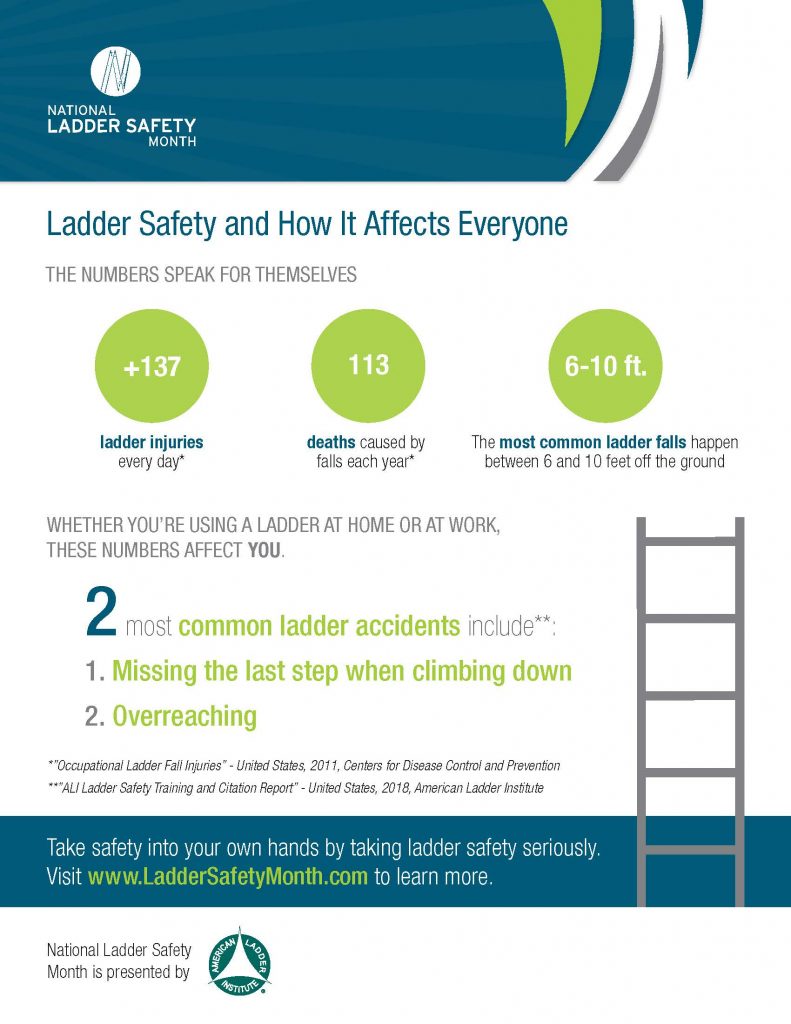
Ladder Safety is Imperative Every Month
The American Ladder Institute recommends that ladders be viewed like any other important tool on the jobsite, and has designated March, National Ladder Safety Month, because ladder safety is essential.
Ladder safety is imperative all year long because ladders are more dangerous than you might think. According to OSHA, falls in general are the leading cause of death in the construction industry. Further, 25% of fatal falls were from ladders. A fall from a ladder can result from sudden movement, weather conditions, rushing on a project, lack of situational awareness, using a damaged ladder, and improper safety gear. Ladder safety can happen for many reasons and lead to serious injury.
There are many factors that can create an unsafe environment for using a ladder. And, there are many types of ladders to consider when assessing safety precautions. That’s why it’s important to check OSHA Standards for the type of ladder you are using and use only UL-approved ladders.
The Facts on Falls

Portable Ladder Safety Tips:
- Ladders should always be inspected prior to use. Look for defects such as broken or split rails or feet, missing rungs, corroded components, etc. Tag defective ladders “Do Not Use” and remove them from service.
- Use the right ladder for the specific job and set up on a stable, level surface.
- Secure extension ladders to prevent sideslip or tipping.
- Use the proper non-slip footwear when climbing a ladder.
- Look for overhead electrical hazards prior to placing the ladder. If using a portable metal ladder, make sure it is clearly marked “Caution – Do not use around electrical equipment” or equivalent wording.
- Maintain three points of contact when climbing or descending a ladder.
- Never use an A-frame stepladder in a closed position (unless designed by the manufacturer for such use). Ensure the spreader bar is locked prior to use.
- Never separate an extension ladder and use the parts separately.
- Extension ladders must extend three feet above the landing surface.
- Set up extension ladders at the correct angle. Position the ladder so that the feet are one foot away from the wall for every four feet of ladder height. A ladder that isn’t set up using this ratio is in danger of falling backwards or slipping out from underneath.
- Don’t overreach when working from a ladder. Keep your torso inside the siderails of the ladder.
- Never “walk” a ladder. Descend and move the ladder.
- Do not work from the top two steps of a stepladder.
- Don’t assume employees know how to safely use a ladder. All employees must be trained!
Compliance Consultants, Inc. supports National Ladder Safety Month and is committed to helping you maintain a safe and healthy work environment.
Contact Compliance Consultants, Inc. today and get started with a safety plan.



